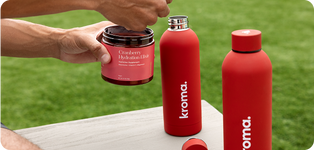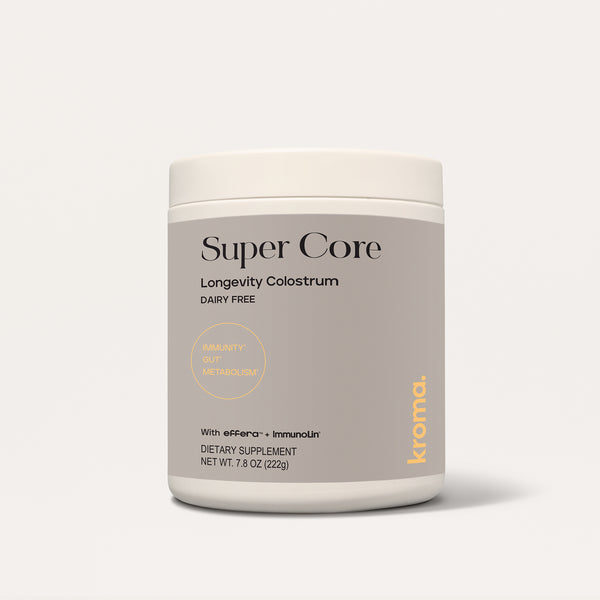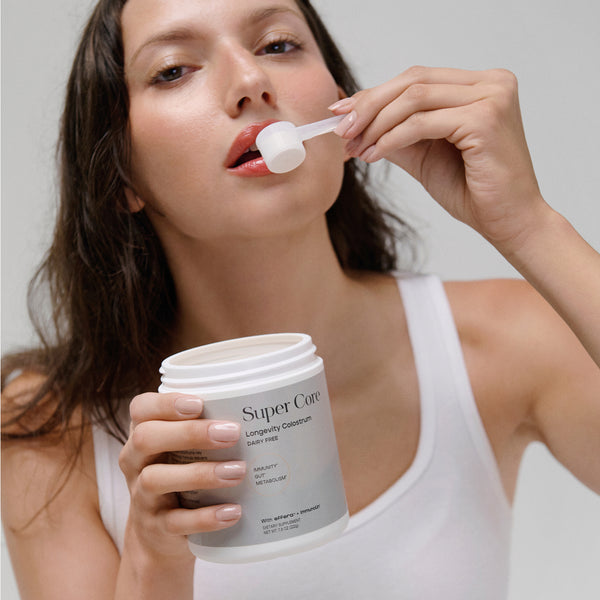A Conversation We Need to Have
If you're taking bovine colostrum, you're not alone. Millions of health-conscious people have embraced this trend in the past few years, drawn by promises of better gut health and stronger immunity. But there's an important part of the story that most of us haven't heard. One that might change how you think about your supplement choices.
This isn't about judgment. Most of us had no idea what happens behind the scenes when colostrum is harvested for human consumption. But now that we're learning more, it's important that we have this conversation.
What Most People Don't Know About Colostrum Harvesting
Here's what the supplement industry doesn't typically share: unlike human babies, calves are born with virtually no antibodies. They receive zero passive immunity through the placenta, which means their survival depends entirely on consuming colostrum within the first 12-24 hours of life.
For calves, colostrum isn't just nutrition: it's their entire immune system. Without adequate amounts during this critical window, they experience what's called "failure of passive transfer" (FPT), leaving them vulnerable to diseases their bodies can't yet fight.
The numbers are concerning: calves without adequate colostrum are up to 74% more likely to develop respiratory disease, diarrhea, and infections. For a newborn calf, these aren't minor setbacks—they often determine whether the animal thrives or struggles throughout its life.
How Colostrum Harvesting Actually Works
Let’s take a deeper look at how the industrial colostrum supply chain works:
Immediately after calving, colostrum is extracted from mother cows—often within hours of birth. The highest-quality colostrum that most brands seek (richest in immunoglobulins and bioactive compounds) comes from this first milking, which is exactly when calves need it most.
Commercial operations typically harvest multiple liters of colostrum per cow, leaving calves with either lower-quality colostrum from subsequent milkings or artificial replacements that don't provide the same immune protection.
Quality control standards for human supplements often require the highest-grade colostrum, meaning the most immunologically valuable portions go to supplement bottles while calves get what's left.
This isn't sustainable agriculture - it's short-term profit extraction at the expense of long-term herd health. And it doesn’t just affect the cows.
The Hidden Cost: Sick Calves, Compromised Food System
When calves don't receive adequate colostrum, the consequences extend beyond individual animal health:
Increased medical intervention: Calves experiencing FPT often require more veterinary care and antibiotic treatment during their first year, contributing to concerns about antibiotic resistance in our food system.
Long-term herd impacts: Calves that experience FPT tend to grow more slowly, survive at lower rates, and produce lower-quality milk and beef as adults. This creates a cycle where weakened immunity gets passed through the food chain.
System inefficiency: Rather than maximizing resources as sometimes claimed, diverting colostrum often creates long-term costs through higher veterinary expenses and reduced animal productivity.
The colostrum supplement industry markets itself around "natural immunity" and "ancestral nutrition", but there's nothing natural about depriving newborn mammals of their species-specific immune protection to create human wellness products.
We've found ourselves in a system where:
-
Human consumers pay premium prices for bovine colostrum that their bodies struggle to process efficiently
-
Calves suffer preventable illnesses from colostrum deficiency
-
Dairy and beef quality decreases due to compromised herd health
-
Antibiotic use increases across the food system
Now There’s a Better Option
The good news is that we don't have to choose between our health goals and these ethical concerns. Science has evolved beyond simply extracting animal products for human use, and we now have access to colostrum that doesn't come from animals.
Human-identical colostrum, like the effera™ in Super Core, provides superior bioavailability, potency, and immune support without requiring any animal products. This isn't just a more ethical choice, research shows it's actually more effective because your body recognizes and processes human-identical compounds more efficiently than bovine sources.
When you choose Super Core, you're supporting innovation that works better for your health while respecting the natural needs of farm animals.
Moving Forward Thoughtfully
None of this is meant to make anyone feel guilty about past choices - most of us were making decisions based on the information available to us. But now that we know more about how these systems work, we have the opportunity to make different choices going forward.
The question isn't whether you were right or wrong before—it's what you want to do with this new information.
If you're ready to explore a more aligned option, Super Core offers the gut health and immune support you're seeking through human-identical nutrition that doesn't compromise animal welfare. Because the best health choices are ones we can feel good about on every level.
Citations
Core Statistics & Meta-Analysis
-
Raboisson, D., Trillat, P., & Cahuzac, C. (2016). Failure of Passive Immune Transfer in Calves: A Meta-Analysis on the Consequences and Assessment of the Economic Impact. PLOS ONE. PMC4795751.
Placental Transfer & Immunology
-
Pentsuk, N., & van der Laan, J.W. (2009). An interspecies comparison of placental antibody transfer: New insights into developmental toxicity testing of monoclonal antibodies. Birth Defects Research Part B, 86(4), 328-344.
Current FPT Prevalence
-
USDA NAHMS (2014). Dairy Cattle Management Practices in the United States, 2014. USDA:APHIS:VS:CEAH:NAHMS.
-
Beam, A.L., et al. (2009). Prevalence of failure of passive transfer of immunity in newborn heifer calves and associated management practices on US dairy operations. Journal of Dairy Science, 92(8), 3973-3980.
Colostrum Quality & Timing
-
Conneely, M., et al. (2017). Colostrum immunoglobulin G concentration of multiparous Jersey cows at first and second milking is associated with parity, colostrum yield, and time of first milking. Journal of Dairy Science, 100(7), 5774-5782.
Economic Impact Studies
-
Lombard, J., et al. (2020). Colostrum Management for Dairy Calves. Veterinary Clinics of North America: Food Animal Practice, 36(1), 33-56. PMC7125574.
Market Data
-
Grand View Research (2024). Colostrum Market Size, Share, Growth | Industry Report, 2030.
-
Precedence Research (2024). Colostrum Market Size to Hit USD 7.34 Billion by 2034.
Commercial Harvesting Practices
-
Cornell University College of Veterinary Medicine. Colostrum Collection and Handling, Usage of Refractometer.
-
University of Kentucky Animal & Food Sciences. Colostrum Management for Dairy Calves.
Animal Welfare Standards
-
A Greener World. Dairy Cattle and Calves Standards for the Animal Welfare Approved seal.
-
PETA. Why You Shouldn't Take Bovine Colostrum.
Regulatory Information
-
MD Anderson Cancer Center. A Dietitian's Take on Colostrum Supplements.
-
Canadian Food Inspection Agency. Export requirements for milk and dairy products.





